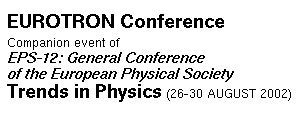 |
 |
 |
Resistance to antibiotics is a major problem in modern therapeutics. Antibiotics are small chemical agents (m.w. 600-800 Dalton), designed to eliminate bacteria. Over 40% of the useful antibiotics interfere with translation of the genetic code into proteins; a fundamental life process, which, in rapidly growing bacterial cells consumes up to 80% of the cell’s energy. Most of these antibiotics target the ribosomes, the universal cellular organelles catalyzing this process. Ribosomes are giant nucleoprotein complexes (m.w. 2.3 mega-Dalton in prokaryotes and 4.5 mega-Dalton in mammalian), built of two independent subunits that associate upon the initiation of protein biosynthesis. The larger subunit creates the peptide bonds and provides the path for emerging proteins and the smaller controls the fidelity, the initiation and the termination of the biosynthetic process.
We identified bacterial sources suitable to serve as pathogen models and used their ribosomes for crystallographic studies with bright synchrotron radiation. These led to the localization of clinically relevant antibiotics that were found to inhibit ribosome function by interfering with substrate binding, hindering the progression of nascent proteins or limiting ribosomal mobility. All bind primarily to ribosomal RNA and do not cause major conformational changes. Understanding their modes of action provide powerful tools for rational drug design.
The following files are available:
- symp1schluenzen.pdf [9056 bytes]
- symp1schluenzen.doc [39936 bytes]
Eurotron Conference is supported by European Commission, High-Level Scientific Conferences